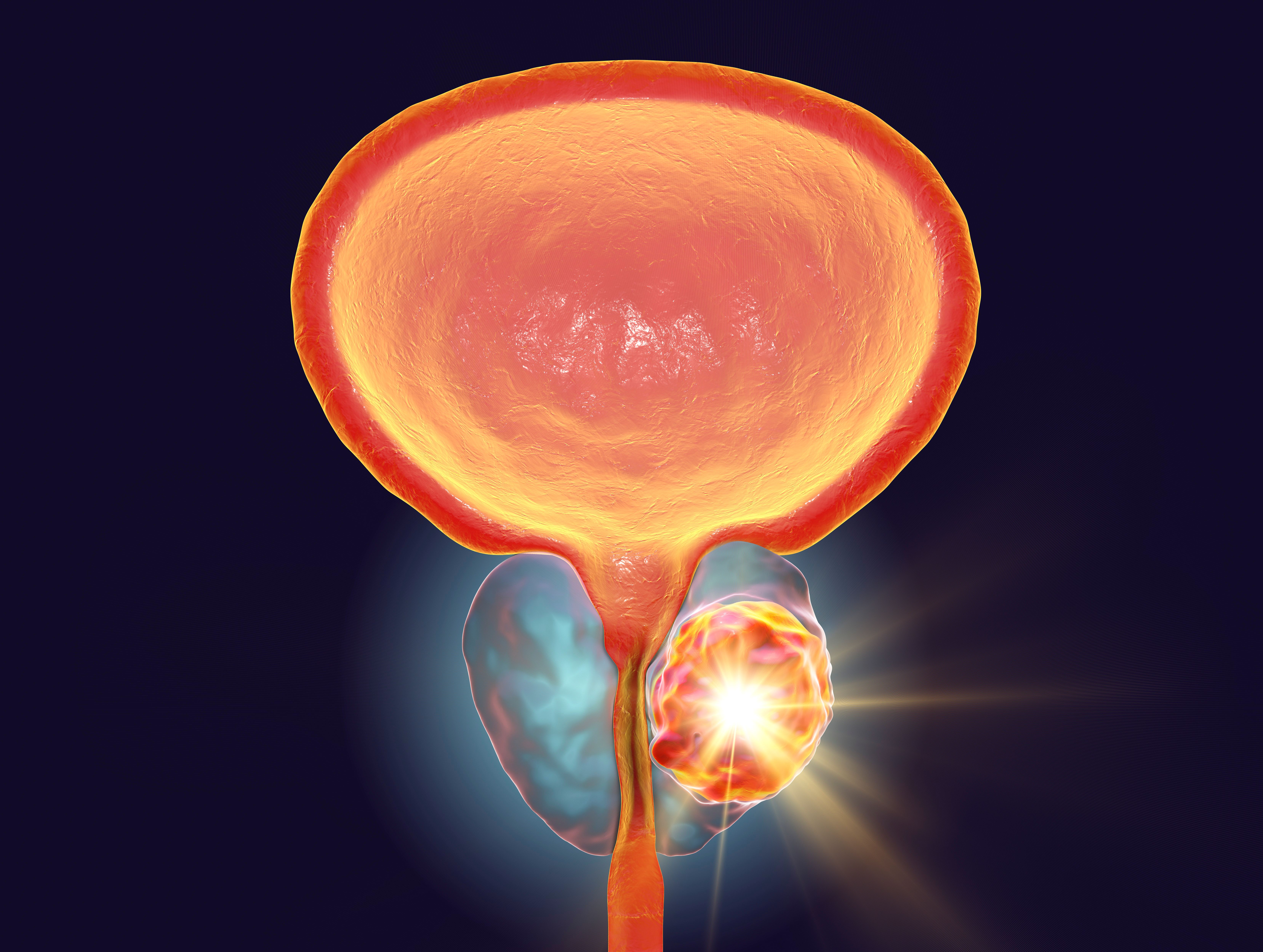BXCL701/Pembrolizumab Yields Durable Responses in Prostate Cancer Subtype
All patients with platinum-resistant, small-cell neuroendocrine prostate cancer who responded to treatment with BXCL701 plus pembrolizumab were microsatellite stable and/or tumor mutational burden–low with a low probability of response to pembrolizumab.
Long-lasting responses were observed following treatment with BXCL701 plus pembrolizumab (Keytruda) for patients with platinum-resistant, small-cell neuroendocrine prostate cancer, according to results from a phase 2a trial (NCT03910660).
Results from the phase 2a trial investigating BXCL701 plus pembrolizumab for patients with platinum-resistant, small-cell neuroendocrine prostate cancer were presented at the 2023 Genitourinary Cancers Symposium.
© Dr_Microbe - stock.adobe.com.

The composite and RECIST response rates were 25% and 20%, respectively among patients treated with the combination; the latter included 4 confirmed partial responses (PR) and 1 unconfirmed PR. Moreover, the disease control rate was 48% with a circulating tumor cell (CTC) response rate of 25%.
The results were presented at the 2023 Genitourinary Cancers Symposium.
Patients were given 200 mg of pembrolizumab intravenously every 3 weeks on day 1 plus BXCL701 at 0.3 mg by mouth twice a day on days 1 to 14 during each 21-day cycle. During cycle 1 step-up dosing was permitted with BXCL701 given at 0.2 mg by mouth twice a day on days 1 to 7 followed by 0.3 mg by twice daily on days 8 to 14.
The primary end points included composite response rate, objective response by RECIST 1.1. criteria, and/or circulating tumor cell conversion from less than 5/7.5 mL or more to less than 5/7.5 mL and/or a 50% or higher prostate-specific antigen decrease from baseline. Secondary end points included duration of response (DOR), progression-free survival, changes in circulating cytokines, and correlations of outcomes with baseline tumor characteristics.
A total of 34 patients were included in the phase 2a portion of the study. The median patient age was 67.5 years old (range, 54-80). A majority of patients had an ECOG performance status of 0 or 1 (47%), respectively. Additionally, visceral metastases were most often present at any site (62%) while fewer patients had liver metastases (32%). Patients had a median of 3 prior lines of therapy.Prior systemic therapies included androgen signaling inhibitors (89%), platinum-based chemotherapy (68%), and taxane chemotherapy (50%).
To be enrolled in the trial, patients were required to have confirmed de novo small-cell neuroendocrine cancer, received 1 or more prior lines of therapy, and have progressive disease. Additionally, they needed to have serum testosterone of less than 50 ng/dL during screening except for those with de novo disease, and an ECOG performance status of 0 to 2.
Exclusion criteria included having had more than 2 cytotoxic chemotherapy regimens for metastatic castration-resistant prostate cancer, or prior treatment with an anti–PD-1, anti–PD-L1, or anti–PD-L2 agent or an agent with another co-inhibitory T-cell receptor.
The median duration of follow-up was 30.8 weeks (range, 1.9-86.9), and the median duration of treatment was 9 weeks (range, 0.7-73.0). Investigators noted that there were 28 evaluable patients as of December 19, 2022.
The median DOR by composite and RECIST criteria was over 6 months (range, 1.3-17.4; range, 1.8-9.8), respectively.
In the evaluable patient population, all responders were microsatellite stable and/or tumor mutational burden low.
Grade 3 treatment-emergent adverse effects (TEAEs) occurred in 47% of patients and 3% had grade 5 events. AEs that led to discontinuation occurred in 18% of patients, with 18% attributed to BXCL701 and 15% to pembrolizumab. Additionally, immune-related AEs occurred in 41% of patients, 7% of which were grade 3 or higher.
Common any-grade TRAEs included fatigue, hypotension, pruritus, dizziness, and nausea.
Reference
Aggarwal RR, Zhang J, Monk P, et al. First-in-class oral innate immune activator BXCL701 combined with pembrolizumab in patients with metastatic, castration-resistant prostate cancer (mCRPC) of small cell neuroendocrine (SCNC) phenotype: phase 2a final results. J Clin Oncol. 2023;41(suppl):176. doi:10.1200/JCO.2023.41.6_suppl.176